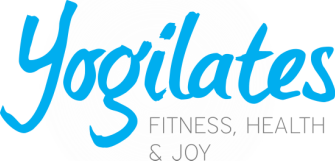As a certified Lifestyle & Weight Management Coach, I have seen many clients with different weight issues and situations. Over the years, I have come up with a questionnaire that goes beyond the standard Health History form to ascertain critical information for evaluating a person's lifestyle and identifying practical, non-subjective, causes for poor weight management. This lifestyle questionnaire is key and shows individual parameters that guide the coach to offering solutions that will work for that person. Nutrition and diet books, programs and experts only provide basic information, but they can't, and shouldn't, presume their advice will work for all people because everyone is different. One of the main contributors to poor nutritional habits is stress. We know that excess stress, which can be either physical, mental, or emotional, can not only cause you to make bad decisions when it comes to what, when, and how you eat, but it also elevates the hormone cortisol, which has been scientifically shown to promote weight gain. What this means, is that even for people who are relatively only slightly overweight, it would help to look at things going on in their lives other than just how much they are eating and exercising. Sometimes, it is just a matter of being conscious of what is causing stress in your life, and then learning to be mindful of the way it makes you feel. Mindfulness is a skill one can learn to control your reactions to stress by basically not reflexively sabotaging yourself and instead allowing the feeling to subside and deciding to take a positive step instead. Common sense and mindfulness are the cornerstones of my integrative approach to lifestyle coaching and have the added benefit of leading to permanent changes in behavior and attitude.
So, with all that being said, I still would like to give everyone some general nutrition advice just so you can feel empowered to make healthy changes sooner, rather than later. Here are five common sense nutritional principles anyone can adopt:
1. To reduce water weight, where the cells of the body bloat with excess water, you should reduce your salt/sodium intake. The best ways to do this are to eliminate crackers, chips, pretzels, and any other packaged cereal products which are usually loaded with sodium. In addition, avoid canned, bagged, or jarred pasta sauces which are also loaded with sodium. Same for all frozen prepared foods. Yes, you may want to start making your own sauces, and instead of chips, eat cut up carrots and other vegetables that give you a similar "crunch".
2. To keep your metabolism on an even keep, try to eat your breakfast within 2 hours of getting up. I know a lot of busy professionals who eat late dinners and then skip breakfast. What they probably don't realize is that they are sabotaging their metabolism. Your metabolism is the rate at which your body burns calories at rest. In the morning, if you don't eat something within two hours of waking, your metabolism will set lower, meaning you will burn less calories and store more in your fat cells. Remember, you don't have to eat right after waking up, and it doesn't need to be a farmer's breakfast (meaning eggs, bacon, toast, etc). It just needs to be within 2 hours and should be something healthy like an egg white sandwich on whole wheat toast, or a yogurt and an orange.
3. Substitute organic low-fat cheese and yogurt for milk and hard cheeses to lessen fat and cholesterol in your diet. Dairy products offer you the easiest and most readily available source of the vital nutrient calcium. However, whole milk products are not recommended for most adults because they contain high amounts of saturated fat and cholesterol. Other than a few teaspoons in your coffee, you never need to drink milk. I personally haven't had milk as a drink for years. Adults can get all the calcium they need from organic low-fat yogurt or cheese and green vegetables.
4. Eating moderately is one of my "seven lifestyle eating principles", and to help you control the amount of food you consume, I recommend using small to medium plates to serve your food. Nine inches across is ideal and all of your meal should fit on that plate. Oh, and for people who may try to stack up the food, your height restriction is 3 inches and the weight should be no more than 12oz. Eating smaller portions is critical to successful weight management. Your stomach is not unlike a balloon. It can get stretched when you overeat. Then, after you have digested, your stomach won't feel quite full again unless it gets expanded the same amount. Here is where you have to train your stomach to be smaller again. Start by tricking your stomach by eating a large salad of basically calorie free lettuce and other salad vegetables (low-fat dressing). This volume will satisfy your stomach's size memory without adding to your fat storage. Then, over the next few days, gradually eat smaller portions at all your meals, while adding some low-fat snacks, like an apple or yogurt, in between meals so you don't feel real hungry. Eventually, your stomach will get accustomed to the less stretched size and will feel full on less.
5. Eat slowly. This is an exercise in mindfulness and research has shown that people who eat faster tend to eat more than people who eat slower. What eating slower does is it allows you time to be conscious of what you have eaten, the time you are eating, and how much you have eaten. Knowing how full you are is different from feeling like your taste buds want more stimulation. Practice eating six bites or spoonfuls (about 1 and 1/2 ozs) of whatever food your eating and chewing each mouthful completely. Then pause. Take a sip of water and try to gauge how full you feel. You may feel full already, or need only a couple of bites more to be satiated. Even if eating slower doesn't lead to eating much less, it is still a good exercise in mindfulness and can give you a greater appreciation of food and the time we spend nourishing our bodies.


 RSS Feed
RSS Feed
